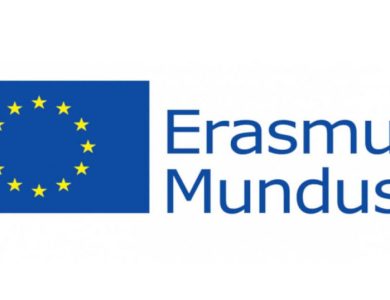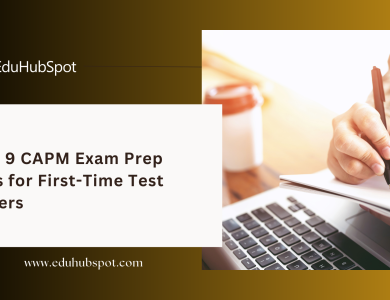Rehabilitation is a journey of healing, restoration, and recovery. Whether it’s regaining mobility after surgery, overcoming the effects of a stroke, or managing chronic pain, the role of a physiotherapy doctor in rehabilitation is pivotal. These healthcare professionals possess the expertise, skills, and knowledge to help patients regain their physical function and improve their overall quality of life. In this article, we will explore the multifaceted role of physiotherapy doctors in the rehabilitation process, shedding light on their crucial contributions to patient care.
Understanding Physiotherapy Doctors
Before delving into their role in rehabilitation, it’s essential to understand who physiotherapy doctors are and what sets them apart in the realm of healthcare. Physiotherapy doctors, often referred to as physiotherapists or physical therapists in some regions, are highly trained professionals with a deep understanding of the musculoskeletal system, human movement, and biomechanics. They hold advanced degrees in physiotherapy, and their education typically spans several years of rigorous study and clinical training.
One of the key distinctions of physiotherapy doctors is their patient-centered approach to care. They prioritize individualized treatment plans tailored to each patient’s unique needs, ensuring that the rehabilitation process is both effective and safe. Their expertise covers a wide range of conditions, from orthopedic injuries to neurological disorders, making them versatile practitioners in the field of rehabilitation.
Assessment and Evaluation
The first and perhaps most crucial step in the rehabilitation process is the assessment and evaluation of the patient’s condition. Physiotherapy doctors are skilled at conducting comprehensive assessments to understand the nature and extent of the patient’s impairment or dysfunction. This typically involves a thorough examination of the patient’s medical history, physical capabilities, and any relevant diagnostic tests or imaging.
During this phase, physiotherapy doctors collaborate closely with other healthcare professionals, such as physicians, surgeons, and occupational therapists, to ensure a holistic understanding of the patient’s health. This interdisciplinary approach helps in developing a well-rounded treatment plan that addresses all aspects of the patient’s condition.
Developing Individualized Treatment Plans
Based on their assessment, physiotherapy doctors create individualized treatment plans designed to address the patient’s specific needs and goals. These plans serve as roadmaps for the rehabilitation journey, outlining the techniques, exercises, and interventions necessary to promote healing and recovery.
One of the strengths of physiotherapy doctors is their ability to adapt and modify treatment plans as the patient progresses. Rehabilitation is not a one-size-fits-all endeavor, and patients may respond differently to various interventions. Physiotherapy doctors continuously monitor their patient’s progress and make necessary adjustments to ensure optimal outcomes.
Hands-On Therapy
Hands-on therapy is a cornerstone of physiotherapy, and it plays a central role in rehabilitation. Physiotherapy doctors employ various manual techniques to address pain, improve mobility, and enhance tissue healing. These techniques may include:
- Manual Therapy: This involves skilled manipulation of joints and soft tissues to reduce pain, increase range of motion, and promote tissue healing.
- Therapeutic Exercise: Physiotherapy doctors prescribe specific exercises tailored to the patient’s condition. These exercises aim to strengthen muscles, improve flexibility, and restore functional movement patterns.
- Electrotherapy: Techniques like ultrasound, electrical stimulation, and heat or cold therapy may be used to reduce pain and inflammation.
- Aquatic Therapy: In some cases, physiotherapy doctors utilize water-based exercises in a controlled pool environment to reduce weight-bearing on joints and facilitate movement.
- Neuromuscular Reeducation: This involves exercises and techniques designed to improve coordination, balance, and proprioception, especially important for patients with neurological conditions.
Education and Empowerment
Rehabilitation extends beyond the clinic or hospital setting, and physiotherapy doctors play a crucial role in educating patients about their conditions and self-management strategies. They empower patients with the knowledge and tools necessary to take an active role in their recovery.
This education encompasses proper body mechanics, posture, and techniques for preventing re-injury. Patients are taught to recognize the warning signs of overexertion or worsening symptoms, enabling them to make informed decisions about their activities and daily routines.
Pain Management
Pain is often a significant component of the rehabilitation process, especially for patients recovering from surgery, trauma, or chronic conditions. Physiotherapy doctors are well-versed in pain management techniques, including manual therapies, modalities, and exercises that can alleviate pain and discomfort.
Importantly, they work with patients to establish realistic pain management goals, which may include reducing the need for pain medications or improving overall pain tolerance. By addressing pain effectively, physiotherapy doctors enable patients to engage more fully in their rehabilitation exercises and activities.
Restoring Independence and Functionality
Ultimately, the goal of rehabilitation is to restore a patient’s independence and functionality to the greatest extent possible. Physiotherapy doctors work tirelessly to help patients regain the ability to perform daily activities, whether it’s walking, climbing stairs, or reaching for objects.
For individuals with neurological conditions or mobility impairments, physiotherapy doctors employ techniques such as gait training, balance exercises, and functional mobility training. These interventions are tailored to the patient’s specific goals, whether it’s improving mobility in a wheelchair or walking with assistive devices.
Preventing Future Issues
The role of a physiotherapy doctor in rehabilitation doesn’t end with recovery. These professionals are also committed to preventing future issues and maintaining the gains made during rehabilitation. They provide patients with strategies and exercises for long-term wellness, helping them to avoid recurring injuries or relapses.
Additionally, physiotherapy doctors often work in collaboration with fitness professionals and personal trainers to transition patients into ongoing exercise and maintenance programs. This continuum of care ensures that patients continue to thrive after their formal rehabilitation has concluded.
Conclusion
The role of a physiotherapy doctor in rehabilitation is indispensable. These highly trained professionals bring a wealth of knowledge, skills, and compassion to the table, guiding patients through the challenging journey of recovery. From assessment and treatment planning to hands-on therapy, education, and long-term wellness strategies, physiotherapy doctors play a vital role in restoring patients’ physical function and improving their overall quality of life. Their dedication to patient-centered care and commitment to promoting independence make them invaluable members of the healthcare team in the realm of rehabilitation.




